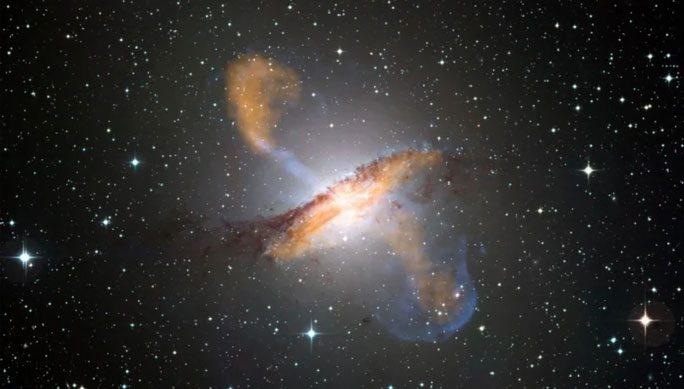Centaurus A, one of the neighboring galaxies of the Milky Way – the galaxy that contains Earth – is actually the remnants of two monstrous galaxies that swallowed each other.
Centaurus A is located just 12 million light-years away from us and is a “strange relative” of the Milky Way. It is not a beautifully shaped spiral galaxy like most galaxies we have seen in the universe; rather, it appears to have been shattered by some force, spreading out into the surrounding space. It is dense with dust, manifesting as dark streaks, and its galactic disk is clearly warped.

Centaurus A Galaxy – (Photo: NSF).
New research from NSF’s NOIRLab (National Science Foundation) indicates that this unusual shape is evidence of a catastrophic collision and “consumption” of galaxies, likely due to both galaxies being too large and powerful.
The collision triggered a series of star-forming explosions, creating a chaotic region filled with bright red clouds of hydrogen and the blue of young, small stars.
The supermassive black hole – the heart of Centaurus A – has a mass equivalent to 55 million suns and is also an intriguing object, as it is ejecting powerful jets into space that extend thousands of light-years, indicating it is voraciously consuming matter. Material from the core of the galaxy continues to fall into the black hole, transforming the entire structure into a bizarre “exploding” ball of light.
According to the authors, this galaxy will serve as a “laboratory” for astronomers. It also provides us with a glimpse into the future of the galaxy that contains Earth. Our Milky Way is also a “monster” galaxy that has reached its current size through at least 16 past galaxy mergers. However, it is estimated that in about 2 billion years, we will face a similarly scaled collision, akin to what Centaurus A has experienced. This will involve a collision with the massive Andromeda Galaxy, an event expected to potentially eject Earth from the habitable zone of the solar system.




















































